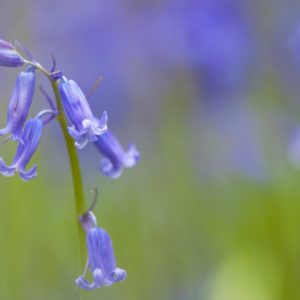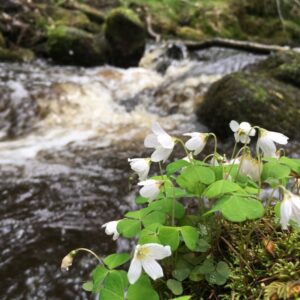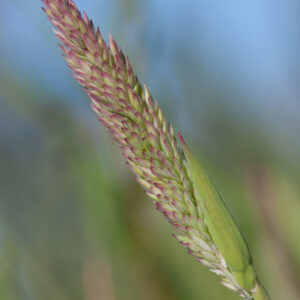Key Facts
- Height: up to 5m
The sweet, heady scent of Honeysuckle, carried on a warm summer breeze, is one of the most delightful experiences of the season.
Strongest at night in order to attract pollinating moths, this scent is a happy addition to any garden. Honeysuckle is a climbing plant, common in hedgerows, scrub and woodlands where it twines itself around other shrubs and trees. Whorls of trumpet-shaped flowers appear from June to August and clusters of red berries ripen in the autumn.
How to Identify
Honeysuckle has climbing, twining stems that are red when young. They climb clockwise around the branches and stems of other plants, sometimes distorting them. Its grey-green, oval leaves appear from February and stay on the plant until autumn, or even over winter. In summer, white or yellow, red-flushed, tubular flowers appear in clusters.
Where to find
Widespread.
How people can help
Like many of our native plants, Honeysuckle is an excellent source of nectar and pollen for all kinds of insects and provides shelter and nesting spots for birds and small mammals. To encourage wildlife into your garden, try planting native flower species in your borders and climbers in your hedges and along your fences to provide a ‘nectar-cafe’. To find out more about wildlife-friendly gardening, visit our Wild About Gardens website: a joint initiative with the RHS, there’s plenty of facts and tips to get you started.
Did you know?
Honesuckle is a true wildlife ‘hotel’. Its nectar-rich, scented flowers attract moths like the impressive Elephant Hawk-moth which are, in turn, preyed upon by bats. New shoots attract blackfly which bring hungry Blue Tits, lacewings and ladybirds. Its climbing stems provide nest sites and material for birds, such as Blackbirds and Pied Flycatchers, and small mammals like Dormice; and its juicy red berries are eaten by everyone from Song Thrushes to squirrels.
Similar Species

Bluebell
- Wildflowers

Common Cotton-Grass
- Wildflowers

Gorse
- Wildflowers

Heather
- Wildflowers

Sphagnum Moss
- Wildflowers

Wood Anemone
- Wildflowers

Wood Sorrel
- Wildflowers

Yorkshire Fog
- Wildflowers
